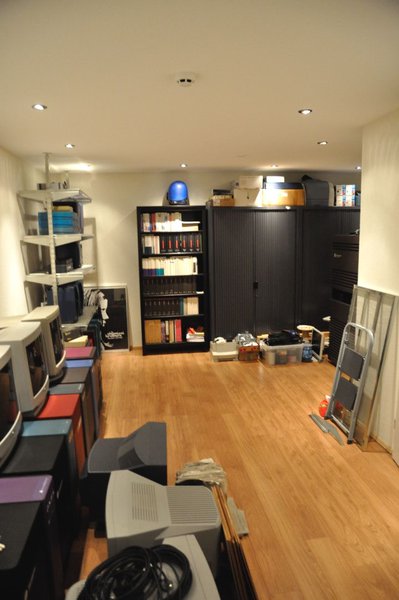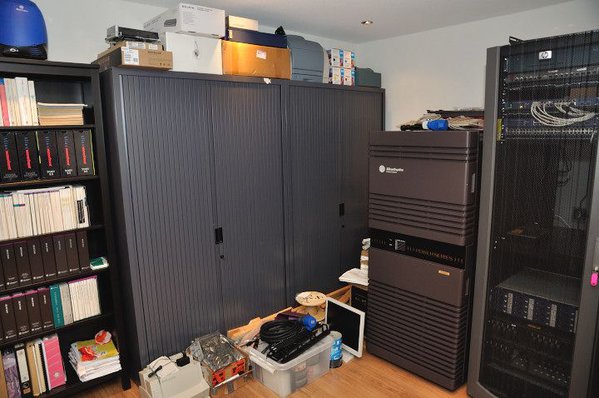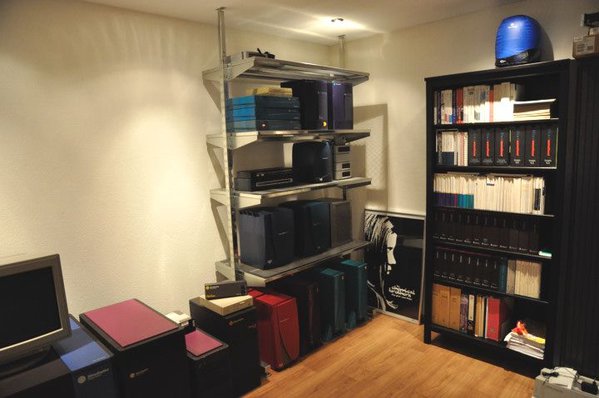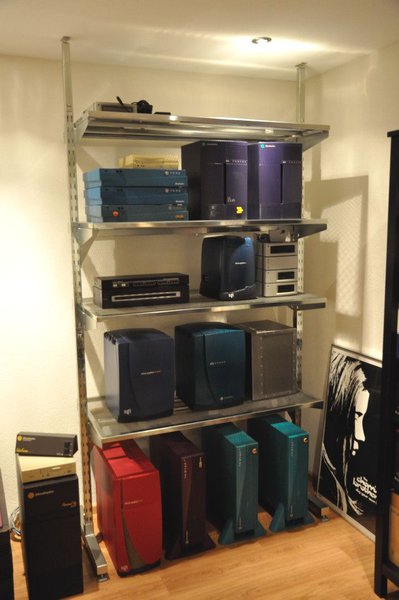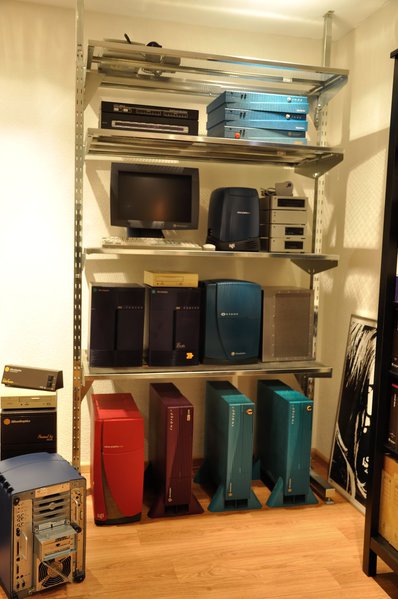jpstewart wrote: What model of Silkworm? I recently acquired a pair of 32-port Silkworm 4100s (well, actually, the IBM-badged equivalent) that are intolerably noisy for about 2 minutes after powering them on. Then once their embedded operating system has booted (and the fans are under control of the environmental monitoring software) they quiet down to a much more reasonable level. Maybe a newer Silkworm (or even a firmware update for yours) would help your situation?
Mine's a HP branded Silkworm 3800. 2Gbit generation, fans always in lift-off mode.
I guess I should start looking for a Silkworm 4100 or maybe even a 5000 if I can get it for the right price. The 5000 uses only 50W -- should be silent *cough*. They are tricky to pick up 2nd hand though, because if you get one with a boot and FOS password set you need a Brocade contract to unlock it, and you have to be sure nobody wiped the license codes or it's a door stop as well.
I've got dual 4GBit adapters in several systems (Tezro, O350, my server etc). If I get a 32port FC switch and partition it into two zones I won't need a second switch to get dual paths to storage.
jpstewart wrote: BTW, I love that row of desksides with their monitors lined up on top in one of your earlier photos. I don't have anything that large, so to see several together is really impressive!
I think the monitors will go away in the end. I want to concentrate everything on a single keyboard/mouse/monitor on the desk.
Now this is a deep dark secret, so everybody keep it quiet

It turns out that when reset, the WD33C93 defaults to a SCSI ID of 0, and it was simpler to leave it that way... -- Dave Olson, in comp.sys.sgi
Currently in commercial service:
 (2x)
(2x)

In the museum : almost every MIPS/IRIX system.
Wanted : GM1 board for Professional Series GT graphics (030-0076-003, 030-0076-004)

It turns out that when reset, the WD33C93 defaults to a SCSI ID of 0, and it was simpler to leave it that way... -- Dave Olson, in comp.sys.sgi
Currently in commercial service:

 (2x)
(2x)

In the museum : almost every MIPS/IRIX system.
Wanted : GM1 board for Professional Series GT graphics (030-0076-003, 030-0076-004)






